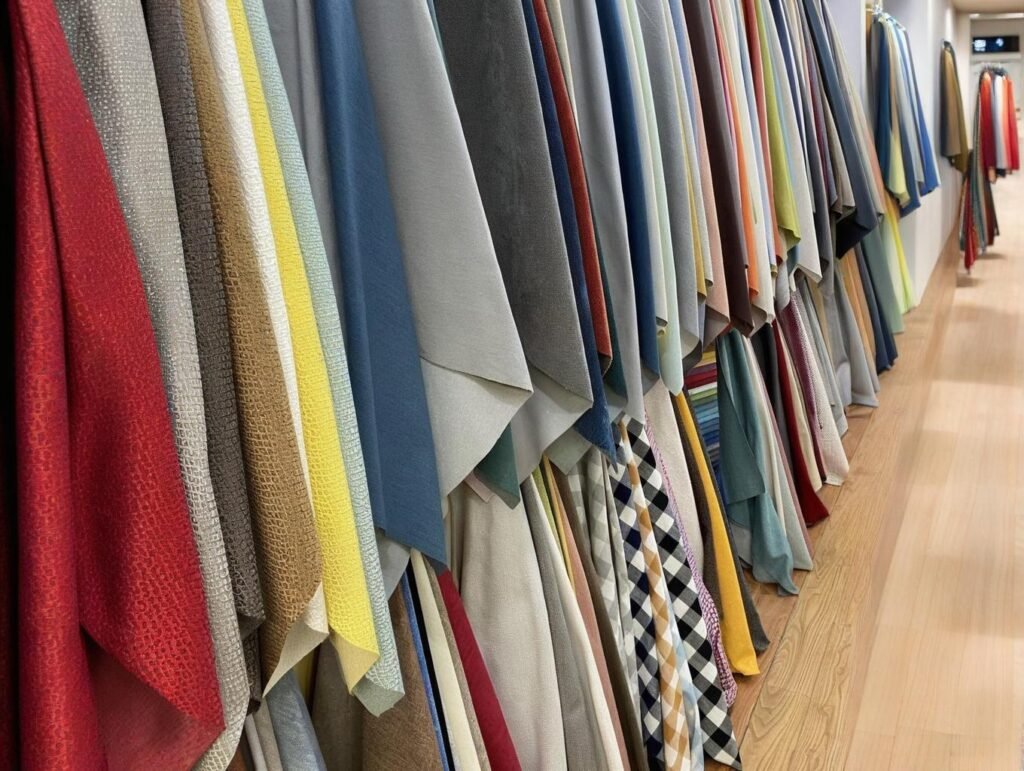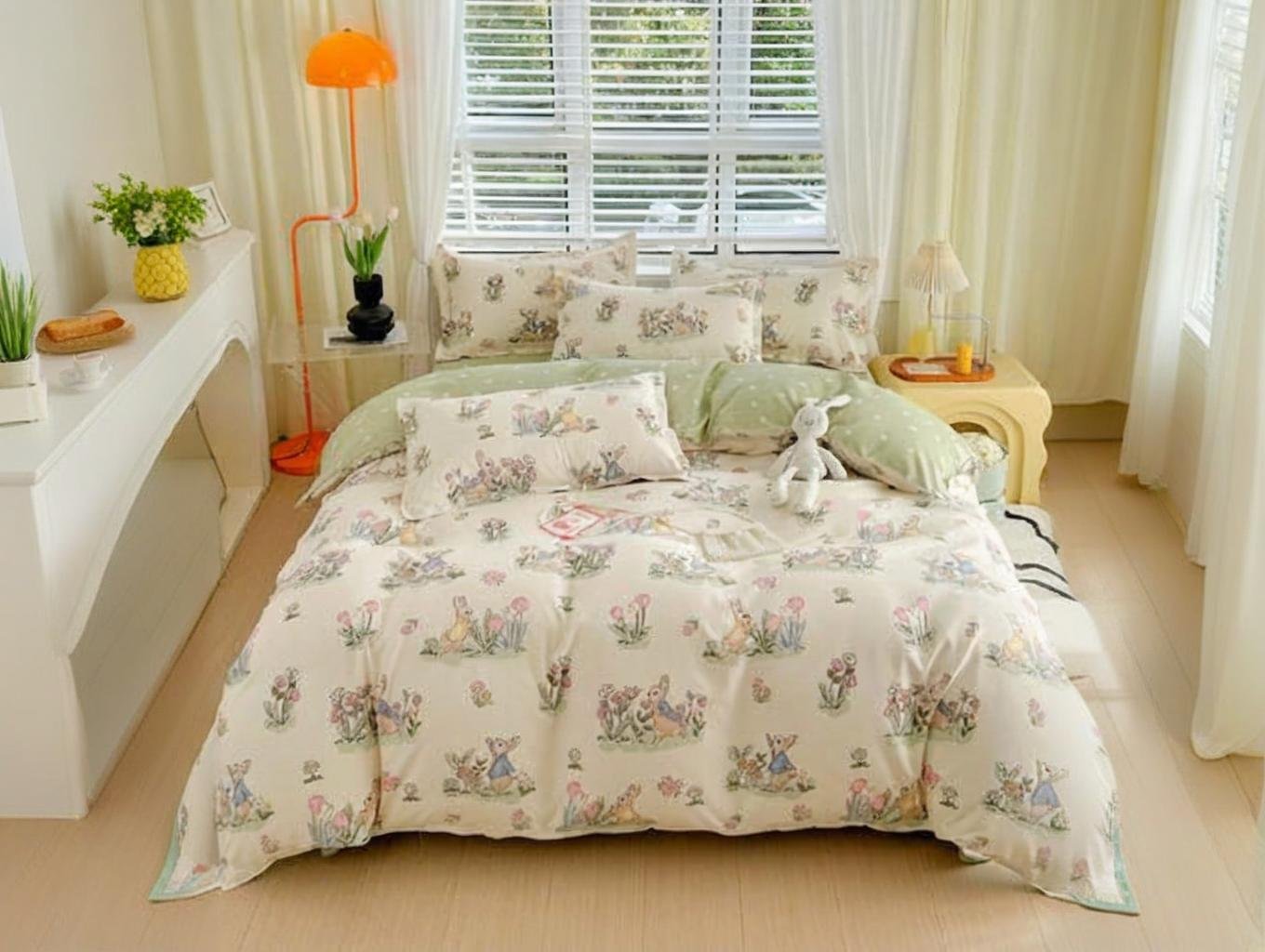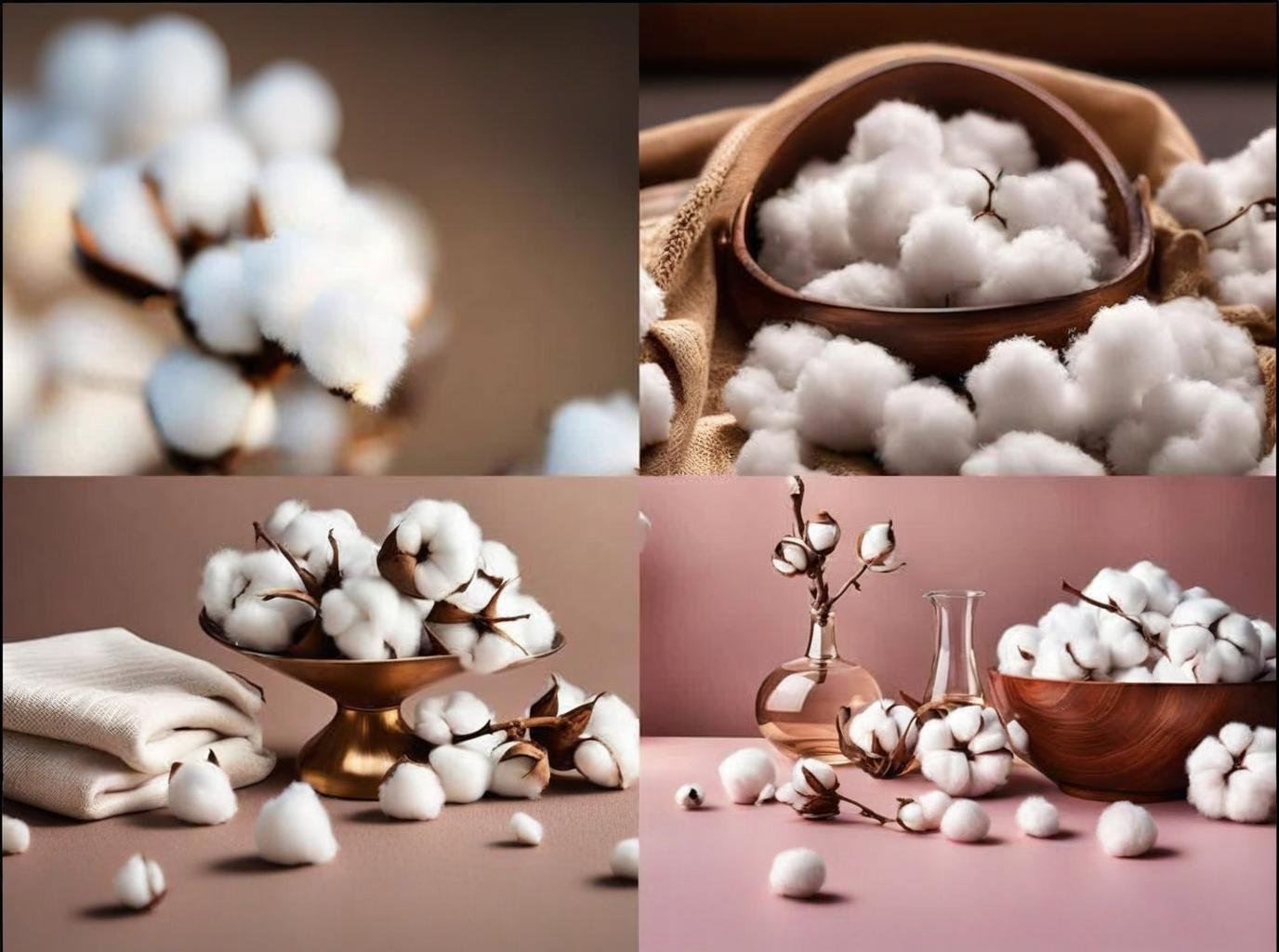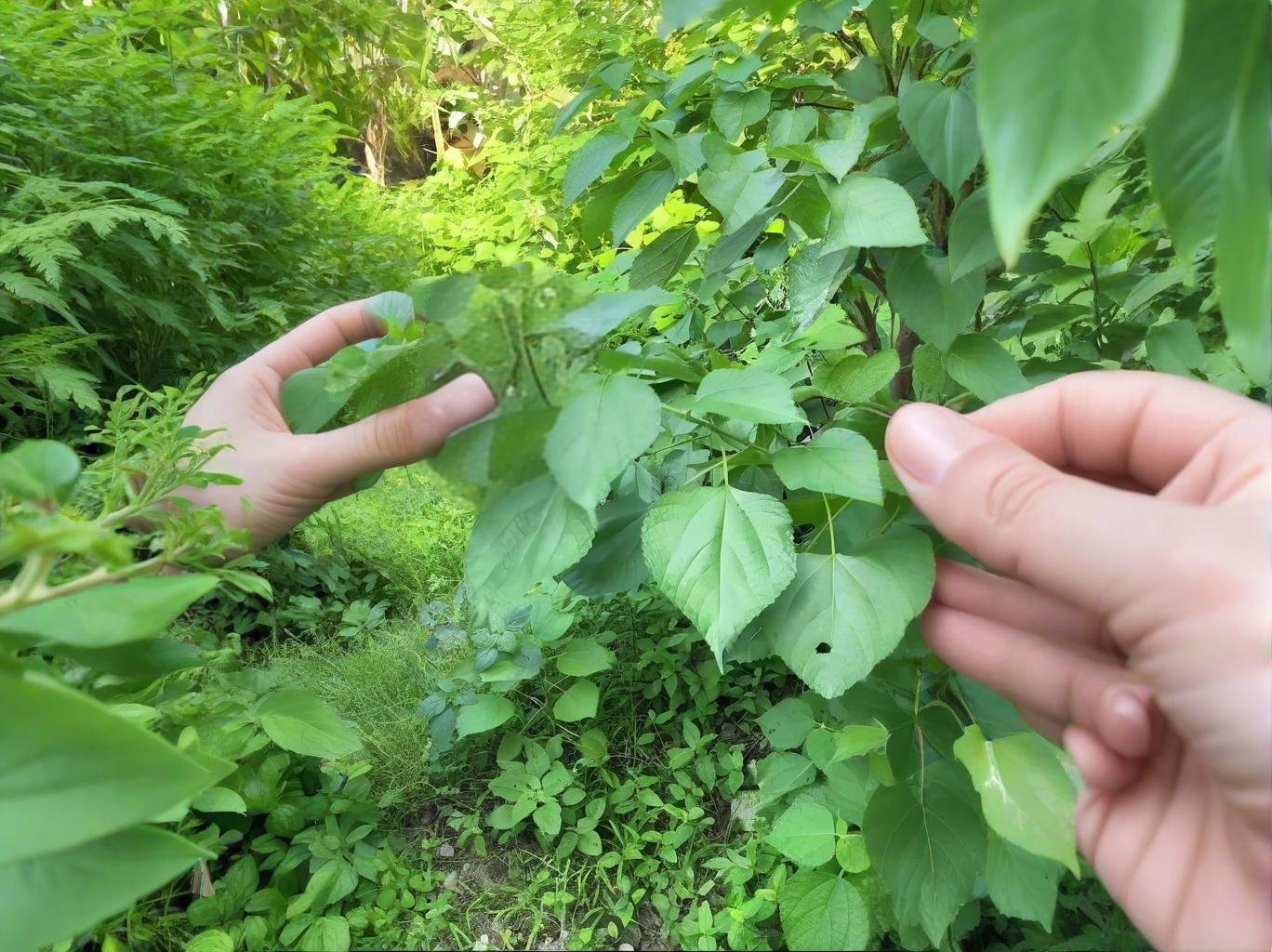Why Is Linen So Expensive in the USA?

For a fabric made from one of the oldest cultivated plants in human history, linen certainly comes at a modern premium—especially in the United States. Whether it’s a linen blazer retailing at \$350 or a queen-size sheet set topping \$450, American consumers often wonder: why does linen cost so much more than cotton or polyester?
Linen is expensive in the USA due to a combination of imported production, limited domestic flax cultivation, high transportation costs, tariffs, and luxury brand positioning. These factors inflate both wholesale and retail prices significantly.
For small fashion brands, home goods retailers, and interior design suppliers, sourcing linen at a competitive price can feel like a challenge. But the reasons behind linen’s pricing in the U.S. aren’t arbitrary—they’re deeply rooted in global supply chains, consumer psychology, and sourcing inefficiencies. To understand how to price—and source—linen smarter, let’s unpack the economics behind the fabric’s American price tag.
1. What Factors Drive Up the Retail Price of Linen in the United States?
The price of linen in the U.S. is inflated by import reliance, labor-intensive production methods, slow-growing raw materials, brand markup, and perceived exclusivity. Retailers further boost price due to linen’s seasonal appeal and niche availability.
What’s Behind the Cost Structure?
a) Linen Is Not Made in the U.S. at Scale
- The U.S. has no significant flax-to-fabric supply chain.
- Almost all linen sold in the U.S. is imported—mainly from:
- China (low–mid cost)
- France/Belgium (premium cost)
- Lithuania/India (mid-tier)
b) Labor and Production Complexity
| Process Stage | Cost Driver |
|---|---|
| Flax harvesting | Often done manually or semi-manually |
| Retting (fiber separation) | Requires weeks of microbial exposure |
| Weaving | Fine linen requires slower looms |
| Finishing | Enzyme washing, stonewashing, calendaring |
- Linen requires longer lead times than cotton or polyester.
- Fewer global facilities produce linen, which means less competition and higher price floors.
c) Retail Markups for “Luxury Positioning”
| Product | Avg. Wholesale Price | Retail Price Range |
|---|---|---|
| Linen shirt | \$18–25 | \$80–250 |
| Sheet set (queen) | \$60–100 | \$200–500 |
| Linen curtains | \$35–50/panel | \$120–300/panel |
- Retailers often add 3–5x markups on linen due to perceived luxury, slow fashion appeal, and niche market size.
d) Case Insight: U.S. Home Goods Retailer
- A Texas-based DTC bedding brand imports 180 GSM French linen at \$9.50/meter.
- After sewing, finishing, and branding, the total cost is \~\$55 per set.
- The set retails at \$299—and sells out every quarter.
e) Buyer Tip
To improve cost efficiency:
- Source custom-milled linen directly from manufacturers like SzoneierFabrics.
- Choose GSM and weave patterns aligned with your final product category to avoid overpaying for unnecessary weight or finishes.
2. Why Is Imported European Linen More Expensive Than Other Fabrics?
European linen is more expensive than most fabrics because of its elite flax origin, ethical processing, long-staple yarn quality, and regional certifications such as Masters of Linen® or European Flax®. These layers of control and sustainability carry a premium.
What Makes European Linen Worth the Price?
a) Elite Flax Farming Regions
- France and Belgium grow flax in coastal microclimates that naturally support longer fibers.
- Harvested only once per year, making supply finite and tightly scheduled.
b) Certified Traceability
| Certification | What It Confirms | Pricing Impact |
|---|---|---|
| European Flax® | EU-grown flax, no irrigation, no GMOs | Moderate |
| Masters of Linen® | Entire EU supply chain, including spinning | High |
| OEKO-TEX | No harmful chemicals | Moderate |
- U.S. retailers often demand these certifications for eco-conscious consumers, further raising sourcing cost.
c) Slow Weaving, High Finish Quality
- European mills like Libeco (Belgium) and Tissage Moutet (France) produce fabric with:
- High GSM density
- Consistent slub pattern
- Colorfast reactive dyeing
- These finishing steps justify a \$12–\$20/meter wholesale price, especially for fashion-grade or hospitality-level linen.
d) Global Shipping Costs from EU to U.S.
| Shipping Mode | Avg. Time | Avg. Cost per CBM (2024) |
|---|---|---|
| Ocean Freight | 15–25 days | \$180–\$250 |
| Air Freight | 4–7 days | \$1.80–\$4.00/kg |
- EU origin shipping adds 10–18% to fabric landed cost for small-to-mid volume buyers.
e) Brand Perception in the U.S.
- U.S. consumers associate “Made in France/Belgium” with refinement and trust.
- Many high-end home brands explicitly market their EU flax origin to justify 4x markups.
f) Buyer Tip
If European prestige matters to your target market:
- Choose pre-dyed, finished European linen for bedding or premium fashion
- Blend EU flax with Chinese finishing via manufacturers like SzoneierFabrics to reduce cost by 20–40%
3. How Do Tariffs, Shipping, and Customs Impact Linen Prices in the U.S.?
Tariffs, shipping costs, and customs fees significantly inflate the final price of imported linen in the U.S., especially when sourcing from Europe or China. These logistical expenses add 15–35% on top of base fabric cost, making linen notably more expensive than domestically sourced fabrics.
The Logistics That Drive Linen Prices Higher
a) U.S. Tariffs on Linen Imports
| Origin Country | Tariff Rate (Woven Linen Fabric) | Applicable Agreements |
|---|---|---|
| China | 12.5%–25% (Section 301 tariffs) | No current FTA |
| EU Countries | 0% (but customs still apply) | Under WTO rules |
| India | 8.4% average MFN duty | No FTA |
| Vietnam | 0%–8.4% | Some items under GSP expired |
- Section 301 tariffs on Chinese goods include linen fabric categories like HS 5309.29.00, raising base costs substantially.
- Brands sourcing EU linen may pay no tariff, but incur VAT and documentation fees.
b) Import-Related Fees That Add Up
| Cost Item | Typical Range (USD) | Frequency |
|---|---|---|
| Port handling (per shipment) | \$150–\$400 | Every container |
| Customs broker fee | \$75–\$200 | Per customs entry |
| ISF filing fee | \$30–\$50 | For ocean shipments from China |
| Bond (for non-resident importers) | \$200–\$600/year | Annual, U.S. entry required |
- These fees are often rolled into final invoice pricing by importers, causing price inflation at the retail level.
c) Freight Cost Breakdown
| Transport Mode | Avg. Transit Time | Avg. Cost (\$ per kg or CBM) | Comment |
|---|---|---|---|
| Sea (China to USA) | 25–35 days | \$180–\$300/CBM | Cheapest but slow |
| Air (China to USA) | 5–7 days | \$2.50–\$5.00/kg | For urgent production |
| Trucking (EU to Port) | 3–5 days | \$100–200 (short haul) | Adds cost for EU-sourced goods |
- Freight alone can increase fabric cost by \$0.80–\$2.00/meter, depending on urgency and route.
d) Case Study: Small U.S. Fashion Label
- A startup imports 180 GSM Chinese linen at \$4.90/meter FOB.
- By the time tariffs (12.5%), port fees, customs brokerage, and inland freight are added, landed cost is \$6.70–\$7.10/meter.
- This requires retailing shirts at \$110+ to maintain a standard margin.
e) Buyer Tip
To reduce logistics-related costs:
- Consolidate orders into full CBMs or pallets.
- Ask SzoneierFabrics about DDP (Delivered Duty Paid) options to avoid unexpected customs bills.
- Choose SEA+RAIL or bonded warehousing for high-volume imports to major U.S. ports.
4. Is Domestic Linen Production in the USA Limited or Nonexistent?
Yes—domestic linen production in the USA is virtually nonexistent. The U.S. lacks large-scale flax farming, fiber retting infrastructure, and weaving mills capable of producing true linen fabric. As a result, the country depends almost entirely on imported linen.
Why the U.S. Doesn’t Make Its Own Linen
a) Agricultural Challenges
| Requirement | Limitation in U.S. Context |
|---|---|
| Cool, humid climate | Flax needs maritime weather—not common in U.S. |
| Specialized harvesting equipment | Not widely available in U.S. farms |
| Labor-intensive retting | U.S. farming leans toward mechanized crops |
- Flax grows best in places like Normandy, Belgium, the Netherlands, not in U.S. climate zones like the South or Midwest.
b) Industrial Infrastructure Gaps
| Process Step | U.S. Capability Status |
|---|---|
| Flax scutching | Very limited or obsolete |
| Wet spinning | No known facilities operational |
| Weaving (linen warp tension) | Unsuitable for cotton looms |
- Linen requires wet spinning mills and air-jet looms, which are rarely found in modern U.S. textile plants.
c) Domestic Fabric Alternatives
| Fabric Made in USA | Comparison to Linen |
|---|---|
| Cotton (Texas, Georgia) | More abundant, less durable |
| Hemp (small-scale farms) | Similar sustainability, limited availability |
| Bamboo viscose (imported raw) | Soft, but chemically processed |
d) Case Insight: Attempt at U.S. Linen Revival
- A California-based textile startup explored domestic linen farming and weaving in 2021.
- After two years, the program was shelved due to:
- Lack of flax harvesting tech
- No scalable processing
- High cost per meter (\$18+)
e) Buyer Tip
Accept that true linen must be imported, but optimize sourcing by:
- Working with vertically integrated mills (e.g., SzoneierFabrics)
- Considering linen blends (cotton-linen, viscose-linen) if 100% isn’t a must
- Leveraging Chinese finishing + European flax models to reduce cost without compromising quality
5. Do Branding and Perceived Luxury Influence Linen’s U.S. Price Tag?
Yes—brand perception and linen’s association with minimalist luxury significantly increase its retail price in the United States. Brands often position linen as a premium, slow-fashion fabric tied to wellness, sustainability, and timeless elegance.
Linen as a Lifestyle Statement
a) “Quiet Luxury” and the Anti-Logo Movement
- Linen is now synonymous with affluent simplicity, embraced by:
- Luxury resortwear brands
- Wellness influencers
- Interior designers promoting “calm” living
- Brands like The Row, Jenni Kayne, and Eileen Fisher use linen to target upper-income consumers looking for soft power, not bold logos.
b) Premium Brand Positioning Examples
| Brand Name | Product | Retail Price (USD) | Branding Angle |
|---|---|---|---|
| Parachute Home | Linen Duvet Set | \$429 | “California cool meets sustainability” |
| The Citizenry | Linen Curtains | \$295/panel | “Globally inspired craftsmanship” |
| 100% Pure | Linen Shirt Dress | \$159 | “Plant-dyed, breathable” |
| Loro Piana | Linen Blazer | \$1,800+ | “Italian elite craftsmanship” |
c) Marketing Language That Elevates Linen
- “Stonewashed softness”
- “Heirloom-quality flax”
- “Natural fabric for intentional living”
- “Elevated comfort for discerning tastes”
d) U.S. Consumer Psychology: Why High-Income Buyers Choose Linen
| Factor | Impact |
|---|---|
| Sustainability consciousness | Linen seen as “plastic-free” luxury |
| Skin comfort and breathability | Especially appealing in hot or humid zones |
| Exclusivity | Not worn by the masses; niche item |
| Instagram aesthetics | Fits “organic lifestyle” visuals |
e) Case Study: Direct-to-Consumer Success
- A Brooklyn-based DTC brand launched a linen robe line with pricing at \$225/unit.
- The marketing focused on self-care, natural living, and minimalist comfort.
- Despite the high price, it sold out three times in 2023, with 60% of customers citing “quality and feel” as the key value.
f) Buyer Tip
If you’re building a premium linen brand:
- Invest in elevated visuals: neutral color palettes, natural textures, clean typography
- Include certification badges (OEKO-TEX, European Flax) on product pages
- Use lifestyle content to associate linen with retreats, wellness, and slow living
6. Which U.S. Retail Categories Push Linen Prices Higher (Fashion vs. Home)?
Both fashion and home goods categories push linen pricing higher in the U.S., but for different reasons. Fashion relies on linen’s seasonal appeal and tactile luxury, while home goods use linen as a premium material for sleep, sustainability, and aesthetics.
Retail Strategies Across Categories
a) Fashion: High Margins, Short Seasons
| Fashion Use Case | Linen Role | Pricing Strategy |
|---|---|---|
| Resortwear | Lightweight, breathable | Higher markup due to exclusivity |
| Officewear (summer) | Polished drape with comfort | Positioned as upgrade from cotton |
| Loungewear & basics | “Feel-good” home dressing | Emphasizes touch + sustainability |
- Most linen apparel appears in spring/summer collections, creating artificial scarcity.
- Blazers, dresses, trousers in linen often get keystone markup (2x–3x wholesale).
b) Home Goods: Wellness Meets Sustainability
| Home Product | Avg. Price Range | Linen Advantage |
|---|---|---|
| Bed sheets (Queen) | \$180–\$500+ | Temperature regulation, softness |
| Duvet covers | \$200–\$450 | Luxury sleep positioning |
| Curtains (per panel) | \$120–\$300 | Light filtering + premium aesthetic |
| Napkins/tablecloths | \$15–\$40/piece | Reusable, rustic, and eco-branded |
- Linen bedding is often marketed as “investment sleepwear” for health-conscious and design-savvy buyers.
- Brands highlight:
- Breathability for better sleep
- Hypoallergenic qualities
- Longer product lifespan vs cotton (100+ washes)
c) Cross-Sell Advantage in Home Retail
- Linen allows high cross-category AOV:
- Sheets → Pillowcases → Throws → Table linens
- Each addition reinforces the brand’s “natural living” narrative.
d) Case Example: Wellness Retail Chain
- A U.S. West Coast wellness brand added linen spa robes and eye pillows in Q1 2024.
- Linen SKUs outsold organic cotton 3:1.
- 70% of shoppers added more than one linen item per order, increasing average cart value by \$58+.
e) Buyer Tip
If you’re targeting the home category:
- Offer bundle discounts for linens (e.g., napkin sets, duvet + sheet kits)
- Collaborate with wellness or interior brands to position linen as part of a holistic lifestyle
7. Are Sustainable and Certified Linen Fabrics More Costly for U.S. Buyers?
Yes—certified sustainable linen fabrics, such as those labeled with OEKO-TEX®, European Flax®, or GOTS, generally cost more for U.S. buyers due to added compliance, limited supply chains, and third-party auditing fees. However, these certifications offer traceability, ethical credibility, and marketing value that justify the investment for premium and eco-conscious brands.
Understanding the Premium on Certified Linen
a) Common Certifications and Their Cost Implications
| Certification | Avg. Fabric Price Impact | Key Benefits for Buyers |
|---|---|---|
| OEKO-TEX® Standard 100 | +5–8% per meter | No harmful chemicals, trusted globally |
| European Flax® | +10–15% | Traceable EU flax, zero irrigation |
| GOTS (Organic Linen) | +20–30% | Full organic farming + ethical labor |
| Masters of Linen® | +25–35% | 100% EU process, heritage quality |
- These certifications do not just add cost—they also add value, particularly for luxury home goods, wellness apparel, and conscious lifestyle products.
b) Why Certifications Cost More
| Factor | Impact on Price |
|---|---|
| Auditing and lab testing | Annual and per-lot fees add overhead |
| Reduced chemical usage | Limits efficiency in dyeing/finishing |
| Longer production timelines | Ethical and natural processing methods take more time |
c) Marketing & Sales Impact
- According to Nielsen’s U.S. Green Purchase Report (2023), 73% of high-income U.S. consumers say sustainability certifications influence their buying decision.
- Brands using certified linen can justify 15–50% higher retail prices with supporting storytelling.
d) Case Study: GOTS-Certified Linen Bedding Brand
- A Colorado-based sleepwear label sources GOTS linen at \$13.50/meter vs. \$8.90 for conventional.
- The product retails at \$375 per bedding set, with certification called out prominently.
- Return rates are under 3%, and customer LTV is 2.7x non-certified competitors.
e) Buyer Tip
If your target market includes eco-conscious or affluent consumers:
- Choose one or two key certifications aligned with your value proposition.
- Work with suppliers like SzoneierFabrics who can source certified yarns and manage compliance documentation.
8. How Can B2B Buyers Reduce Costs When Sourcing Linen for the U.S. Market?
B2B buyers can reduce linen sourcing costs through direct mill relationships, blended fabric strategies, optimized shipping methods, and smart MOQ planning. Working with experienced suppliers that offer design customization, quality control, and flexible logistics—like SzoneierFabrics—helps buyers manage cost without sacrificing quality.
Cost-Saving Strategies That Don’t Compromise Quality
a) Source Directly from Manufacturers, Not Traders
| Option | Advantage |
|---|---|
| Manufacturer | Factory pricing, better MOQ flexibility |
| Trader/Agent | Adds 8–20% margin, limited customization |
- Direct sourcing also reduces miscommunication in lead time, GSM specs, and dye batches.
b) Consider Blends When 100% Linen Isn’t Required
| Fabric Blend | Benefits | Ideal Use Case |
|---|---|---|
| Linen-Cotton (70/30) | Softens hand feel, cuts cost 10–25% | Apparel, robes, basic bedding |
| Linen-Viscose (60/40) | Adds drape, lowers price 15–30% | Dresses, curtains, napkins |
| Linen-Polyester (55/45) | Reduces wrinkling, cost down 20–35% | Tablecloths, high-use hospitality |
- These options preserve the look and texture of linen, with easier care and affordability.
c) Choose Economical GSM and Widths Based on Product
| Product Type | Recommended GSM | Cost Efficiency Tips |
|---|---|---|
| Shirts/Dresses | 130–160 | Lightweight, reduces shipping weight |
| Bedding | 160–190 | Sweet spot for softness and durability |
| Curtains/Upholstery | 200–250+ | Justify heavier GSM only if needed |
d) Shipping Optimization Tactics
- Order in full CBMs or pallets to maximize container space.
- Use FOB + consolidated freight if your volume is lower than one container.
- For seasonal launches, consider early booking (30–45 days) to lock best ocean rates.
e) Partner with Full-Service Suppliers
SzoneierFabrics offers cost-saving advantages by:
- Providing free samples and swatches
- Supporting low MOQ from 50 meters
- Offering custom dyeing and enzyme washing in-house
- Managing quality control and pre-shipment inspections
- Delivering with air or sea freight DDP options to U.S. warehouses
f) Buyer Tip
Request a custom quote with:
- Desired GSM range
- Preferred finish (raw, pre-washed, enzyme-washed)
- Target price per meter
- Delivery timeline
This allows your supplier to optimize sourcing and finishing accordingly.
Linen in the U.S. Is Pricey—But It Doesn’t Have to Be
Linen’s higher cost in the U.S. is a result of geography, trade policy, production complexity, and branding strategy—not an inherent limitation. For B2B buyers, the solution lies in understanding where the costs originate and how to control them through better sourcing, smarter blends, and trustworthy partners.
Want to source certified, custom, or cost-effective linen for your U.S. market?Contact SzoneierFabrics now to request free samples, low-MOQ quotes, and tailored sourcing advice. Let’s bring premium linen within your reach—without overpaying.
Can't find the answers?
No worries, please contact us and we will answer all the questions you have during the whole process of bag customization.
Make A Sample First?
If you have your own artwork, logo design files, or just an idea,please provide details about your project requirements, including preferred fabric, color, and customization options,we’re excited to assist you in bringing your bespoke bag designs to life through our sample production process.



